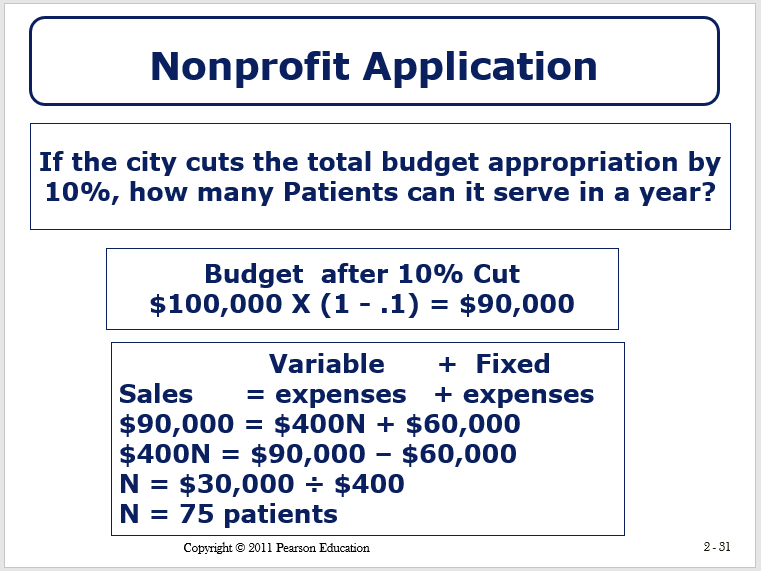When you have finished studying this chapter, you should be able to:
- Explain how activity cost drivers affect cost behavior.
- Show how changes in cost driver levels affect variable and fixed costs.
- Calculate break-even sales volume in total dollars and total units.
- Create a cost-volume-profit graph and understand the assumptions behind it.
- Calculate sales volume in total dollars and total units to reach a target profit.
- Differentiate between contribution margin and gross margin.
- Explain the effects of sales mix on profits (Appendix 2A).
- Compute cost-volume-profit relationships on an after-tax basis (Appendix 2B).
Cost Drivers and Cost Behavior
Definitions
Cost drivers are measures of activities that require the use of resources and thereby cause costs.
Cost behavior is how the activities of an organization affect its costs.
Examples
Value Chain Function
Research and development
Salaries of sales personnel, costs of market surveys
Salaries of product and process engineers
Design of products, services, and processes
- Salaries of product and process engineers
- Cost of computer-aided design equipment used to develop prototype of product for testing
Production
Labor wages
Supervisory salaries
Maintenance wages
Depreciation of plant and machinery, supplies
Energy cost
Marketing
Cost of advertisements
Salaries of marketing personnel, travel costs, entertainment costs
Distribution
Wages of shipping personnel
Transportation costs including depreciation of vehicles and fuel
Customer service
Salaries of service personnel
Costs of supplies, travel
Example of Cost Drivers:
Number of new product proposals
Complexity of proposed products
Number of engineering hours
Number of distinct parts per product
Labor hours
Number of people supervised
Number of mechanic hours
Number of machine hours
Kilowatt hours
Number of advertisements
Sales dollars
Labor hours
Weight of items delivered
Hours spent servicing products
Number of service calls
Relevant Range
Definition
- The relevant range is the limit of cost-driver activity level within which a specific relationship between costs and the cost driver is valid.
- Even within the relevant range, a fixed cost remains fixed only over a given period of time — usually the budget period.
CVP Scenario
- The study of the effects of output volume on revenue(sales), expenses(costs), and net income(net profit).
Break-Even Point
- the level of sales at which revenue equals expenses and net income is zero.

Target Net Profit
- Formula: $Target Sales Volume In Units = \frac{Fixed expenses + Target net income}{Contribution margin per unit}$
- contribution margin ratio = unit contribution / selling price
Sales volume in dollars = fixed expenses+target net income/contribution margin ratio
An example:
Margin of Safety
- How far sales can fall before losses occur and is the difference between the level of planned sales and the break-even point.
- margin of safety in units = planned unit sales - break-even unit sales
Operating Leverage
- A firm’s ratio of fixed costs to variable costs
